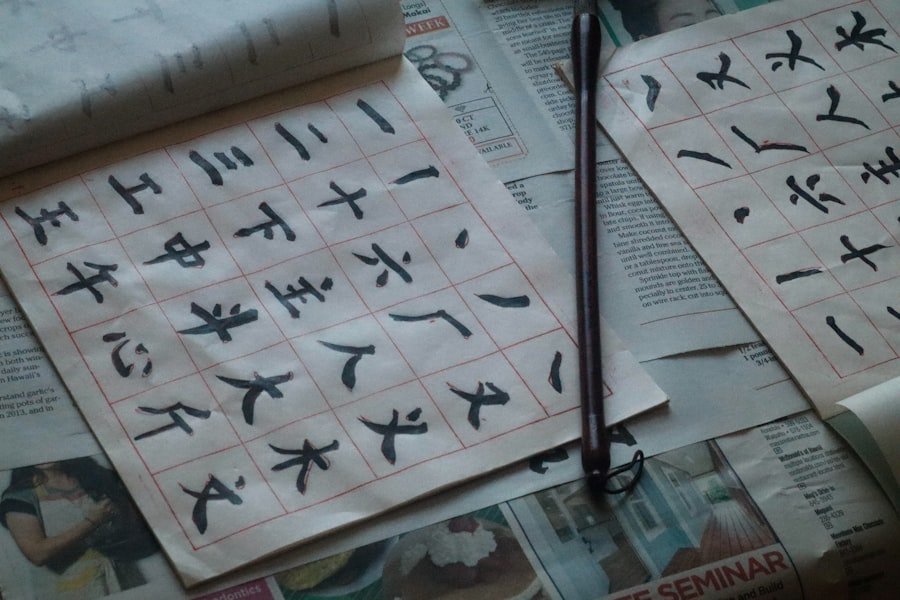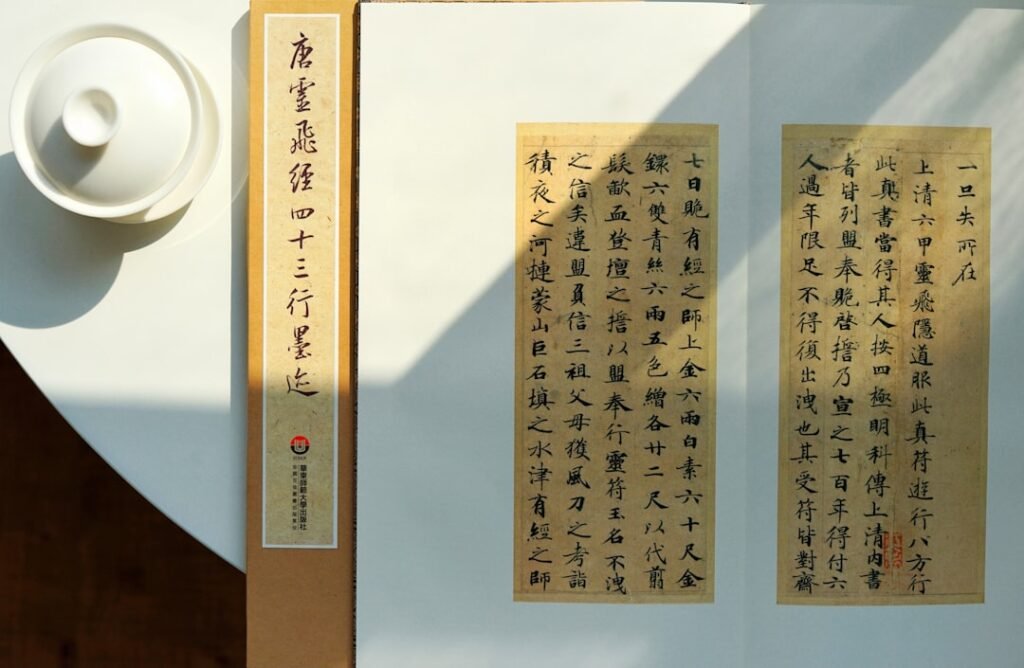Chinese calligraphy is an ancient art form that transcends mere writing; it is a profound expression of culture, philosophy, and aesthetics. Rooted in thousands of years of history, this practice is not only about inscribing characters but also about conveying emotions and thoughts through the fluidity of brush strokes. Each character is a work of art, embodying the spirit of the language and the artist’s personal touch.
The beauty of Chinese calligraphy lies in its ability to blend form and meaning, creating a visual representation of language that resonates deeply with both the creator and the observer. As one delves into the world of Chinese calligraphy, it becomes evident that mastering this art requires dedication, practice, and an understanding of its fundamental principles. The journey begins with the selection of appropriate tools and materials, which are essential for producing quality work.
However, many aspiring calligraphers often overlook the significance of these elements, leading to frustration and subpar results. In this article, we will explore common pitfalls that beginners encounter in their calligraphy journey and provide insights on how to avoid them, ultimately enhancing the learning experience. Master the art of Chinese calligraphy. Enroll now at the LC Chinese School in Oslo.
Table of Contents
ToggleSummary
- Chinese calligraphy is a traditional art form that requires skill and precision.
- Using the wrong tools and materials can hinder the quality of the calligraphy.
- Incorrect posture and hand position can lead to sloppy and inconsistent strokes.
- Understanding stroke order is crucial for creating balanced and harmonious characters.
- Inconsistent brush pressure can result in uneven and messy lines.
Choosing the Wrong Tools and Materials
The tools and materials used in Chinese calligraphy play a crucial role in determining the quality of the final piece. Beginners often make the mistake of selecting inferior brushes, inks, or papers, which can hinder their progress and diminish their enthusiasm for the art. A good brush should have a balance of stiffness and flexibility, allowing for both fine lines and bold strokes.
Similarly, high-quality ink and paper are essential for achieving the desired effects; substandard materials can lead to smudging or fading, detracting from the overall aesthetic. Moreover, understanding the different types of brushes available is vital for any aspiring calligrapher. For instance, soft brushes are ideal for creating delicate strokes, while harder brushes are better suited for bold characters.
The choice of paper also influences the outcome; rice paper is often preferred for its absorbency and texture, while other types may not yield the same results. By investing time in selecting the right tools and materials, beginners can set themselves up for success and cultivate a deeper appreciation for the art form.
Incorrect Posture and Hand Position

Another common mistake made by novice calligraphers is neglecting proper posture and hand position while writing. The physical aspect of calligraphy is just as important as the artistic one; incorrect posture can lead to discomfort and fatigue, ultimately affecting the quality of one’s work. It is essential to maintain a relaxed yet stable stance, with feet shoulder-width apart and shoulders relaxed.
This foundation allows for better control over the brush and promotes fluid movement. Hand position is equally critical in achieving precision in strokes. Beginners often grip the brush too tightly or hold it at awkward angles, which can result in uneven lines and a lack of fluidity.
The ideal grip involves holding the brush lightly between the thumb and index finger while allowing the other fingers to support it gently. This technique not only enhances control but also enables a more natural flow of movement. By paying attention to posture and hand position, aspiring calligraphers can significantly improve their technique and overall enjoyment of the art.
Lack of Understanding of Stroke Order
One of the fundamental principles of Chinese calligraphy is the correct stroke order for each character. Beginners frequently overlook this aspect, leading to confusion and inconsistency in their writing. Each character is composed of strokes that must be executed in a specific sequence to maintain balance and harmony.
Understanding stroke order not only aids in memorising characters but also contributes to developing a more fluid writing style. Moreover, adhering to stroke order helps in cultivating muscle memory, which is essential for improving one’s calligraphy skills over time. When strokes are executed in the correct order, it becomes easier to achieve the desired shape and form of each character.
Beginners should take the time to study stroke order charts and practice writing characters methodically, ensuring that they grasp this crucial aspect before moving on to more complex forms. By doing so, they will lay a solid foundation for their calligraphy journey.
Inconsistent Brush Pressure
Inconsistent brush pressure is another common pitfall that can significantly impact the quality of Chinese calligraphy. The ability to vary pressure while writing is what gives each character its unique character and depth. Beginners often struggle with this concept, resulting in flat or lifeless strokes that fail to convey the intended emotion or aesthetic appeal.
To master brush pressure, it is essential to practice varying the amount of force applied during different strokes. For instance, applying more pressure at the beginning of a stroke can create a bold line, while easing off towards the end can produce a delicate tapering effect. This dynamic interplay between pressure and release adds dimension to each character, making it visually engaging.
Aspiring calligraphers should dedicate time to exercises focused on brush pressure, allowing them to develop a more nuanced understanding of how it affects their writing style.
Neglecting the Importance of Space and Balance

Space and balance are integral components of Chinese calligraphy that are often overlooked by beginners. The arrangement of characters on the page can significantly influence the overall composition and aesthetic appeal of a piece. Many novice calligraphers tend to crowd characters together or leave excessive space between them, resulting in an unbalanced appearance that detracts from their work’s beauty.
To achieve harmony in calligraphy, it is essential to consider both positive and negative space—the areas occupied by characters versus those left blank. A well-composed piece will have a sense of flow and rhythm, guiding the viewer’s eye across the page. Beginners should practice sketching out their compositions before committing ink to paper, allowing them to experiment with spacing and balance.
By developing an awareness of these elements, they can create more visually pleasing works that resonate with viewers.
Ignoring the Importance of Ink Dilution
The dilution of ink is another aspect that beginners often overlook when practising Chinese calligraphy. The richness or subtlety of ink can dramatically affect the final appearance of characters. Many novices tend to use ink straight from the bottle without considering how dilution can enhance their work’s depth and texture.
Understanding how to dilute ink properly allows calligraphers to achieve a range of tones within their characters. For instance, using thicker ink can create bold statements, while diluted ink can produce softer lines that evoke a sense of delicacy. Experimenting with different dilutions can lead to exciting discoveries about how ink interacts with various papers and brushes.
By embracing this aspect of calligraphy, beginners can expand their creative possibilities and develop a more sophisticated approach to their art.
Rushing Through Characters
In an age where instant gratification is often sought after, many beginners fall into the trap of rushing through characters in their quest for improvement. This impatience can lead to sloppy work that fails to reflect their true potential as artists. Calligraphy is an art form that demands time and attention; each stroke requires careful consideration and execution.
Taking time to slow down allows calligraphers to focus on technique rather than merely completing characters quickly. By practising mindfulness during each session, beginners can cultivate a deeper connection with their work and appreciate the nuances involved in creating beautiful characters. Setting aside dedicated time for practice without distractions can foster an environment conducive to growth and mastery.
Ignoring the Importance of Practice and Patience
The journey towards mastering Chinese calligraphy is not one that can be rushed; it requires consistent practice and patience. Many beginners become discouraged when they do not see immediate results or when their work does not meet their expectations. However, it is essential to remember that mastery comes with time and dedication.
Regular practice allows calligraphers to refine their skills gradually while building confidence in their abilities. Setting realistic goals for each practice session can help maintain motivation and provide a sense of accomplishment as progress is made over time. Additionally, embracing mistakes as learning opportunities rather than setbacks fosters resilience and encourages continued exploration within this beautiful art form.
Lack of Understanding of Different Calligraphy Styles
Chinese calligraphy encompasses a rich tapestry of styles, each with its unique characteristics and historical significance. Beginners often limit themselves by focusing solely on one style without exploring others that may resonate with them more deeply or suit their artistic inclinations better. Understanding various styles—such as Kaishu (regular script), Xingshu (running script), or Caoshu (grass script)—can open up new avenues for creativity.
By studying different styles, aspiring calligraphers can gain insights into techniques that may enhance their own practice. Experimenting with various forms allows individuals to discover their preferences while developing a broader skill set. Engaging with diverse styles also deepens one’s appreciation for the art form as a whole, enriching both personal expression and cultural understanding.
Failing to Seek Feedback and Guidance
Finally, one of the most significant barriers to growth in Chinese calligraphy is failing to seek feedback and guidance from more experienced practitioners or instructors. Many beginners may feel hesitant or self-conscious about sharing their work; however, constructive criticism is invaluable for improvement. Engaging with others who share a passion for calligraphy can provide fresh perspectives and insights that may not have been considered otherwise.
Enrolling in courses or workshops—such as those offered at LC Chinese School in Oslo—can provide structured learning environments where students receive expert guidance tailored to their individual needs. These courses not only cover fundamental techniques but also foster a sense of community among learners who share similar interests. By actively seeking feedback from peers or instructors, aspiring calligraphers can accelerate their growth while cultivating meaningful connections within this vibrant artistic community.
In conclusion, embarking on a journey into Chinese calligraphy is both rewarding and challenging. By recognising common pitfalls such as choosing inappropriate tools, neglecting proper technique, or rushing through characters, beginners can take proactive steps towards improvement. Emphasising practice, patience, exploration of different styles, and seeking guidance will ultimately lead to greater mastery over this beautiful art form—especially when supported by structured courses like those at LC Chinese School in Oslo.
With dedication and an open mind, anyone can unlock their potential as a calligrapher while celebrating the rich cultural heritage embedded within each stroke.
Master the art of Chinese calligraphy. Enroll now at the LC Chinese School in Oslo.







